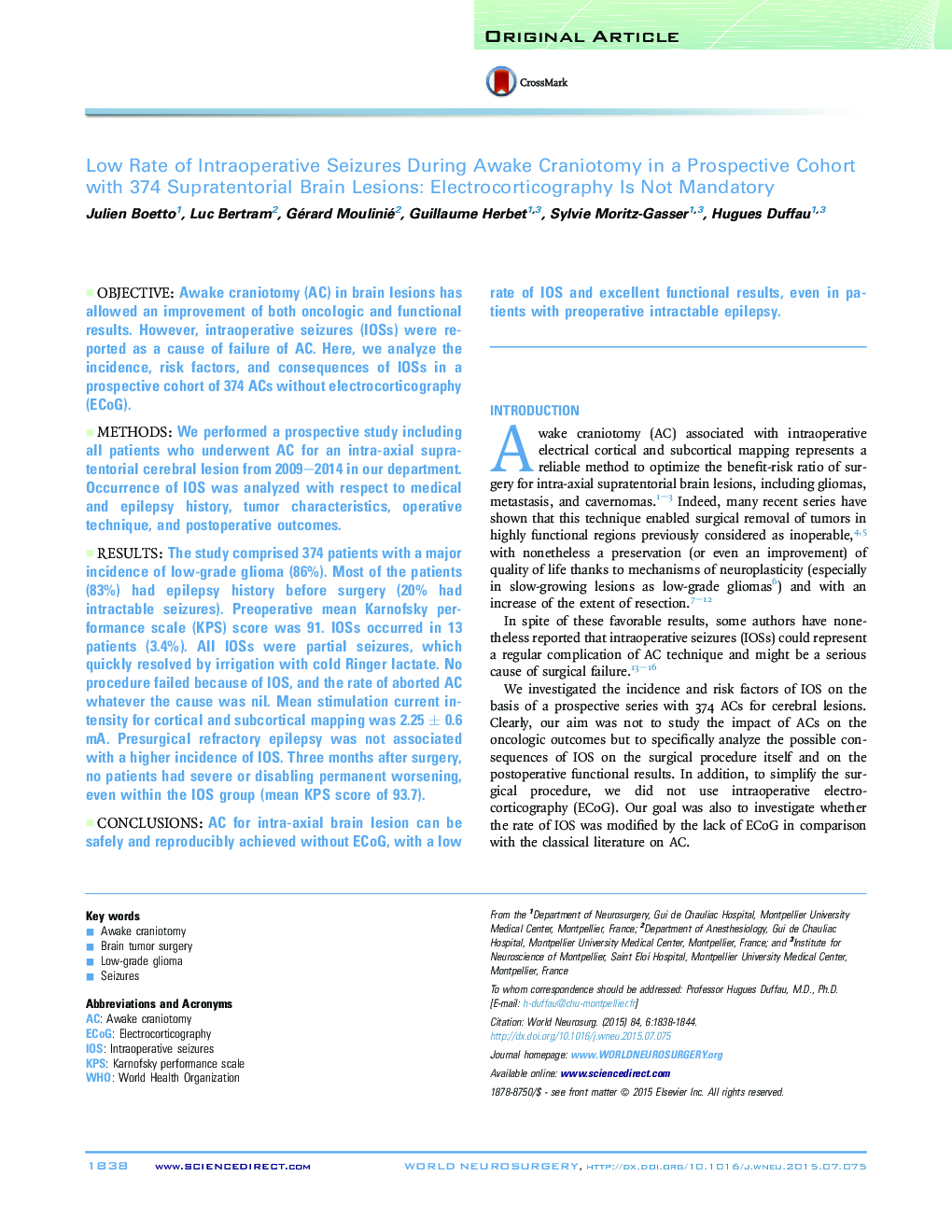| Article ID | Journal | Published Year | Pages | File Type |
|---|---|---|---|---|
| 6044524 | World Neurosurgery | 2015 | 7 Pages |
ObjectiveAwake craniotomy (AC) in brain lesions has allowed an improvement of both oncologic and functional results. However, intraoperative seizures (IOSs) were reported as a cause of failure of AC. Here, we analyze the incidence, risk factors, and consequences of IOSs in a prospective cohort of 374 ACs without electrocorticography (ECoG).MethodsWe performed a prospective study including all patients who underwent AC for an intra-axial supratentorial cerebral lesion from 2009-2014 in our department. Occurrence of IOS was analyzed with respect to medical and epilepsy history, tumor characteristics, operative technique, and postoperative outcomes.ResultsThe study comprised 374 patients with a major incidence of low-grade glioma (86%). Most of the patients (83%) had epilepsy history before surgery (20% had intractable seizures). Preoperative mean Karnofsky performance scale (KPS) score was 91. IOSs occurred in 13 patients (3.4%). All IOSs were partial seizures, which quickly resolved by irrigation with cold Ringer lactate. No procedure failed because of IOS, and the rate of aborted AC whatever the cause was nil. Mean stimulation current intensity for cortical and subcortical mapping was 2.25 ± 0.6 mA. Presurgical refractory epilepsy was not associated with a higher incidence of IOS. Three months after surgery, no patients had severe or disabling permanent worsening, even within the IOS group (mean KPS score of 93.7).ConclusionsAC for intra-axial brain lesion can be safely and reproducibly achieved without ECoG, with a low rate of IOS and excellent functional results, even in patients with preoperative intractable epilepsy.
